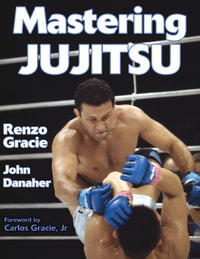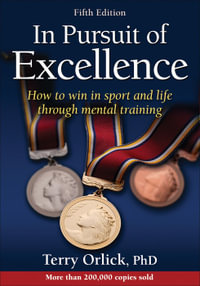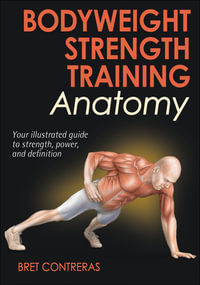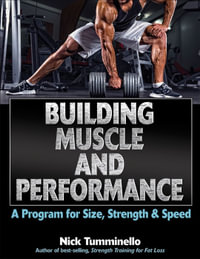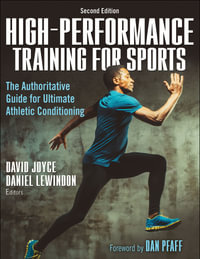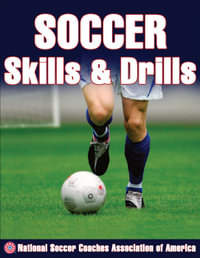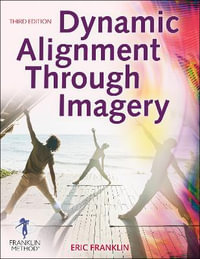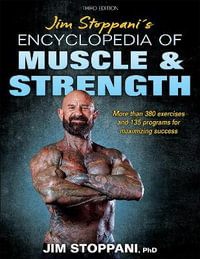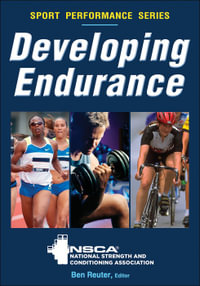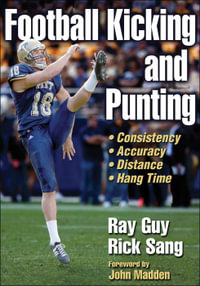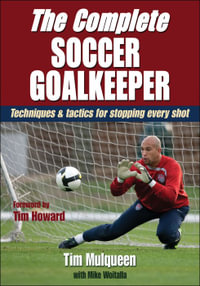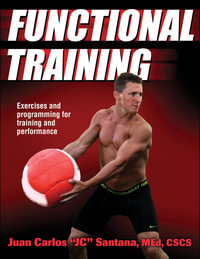
Foundations of Sport and Exercise Psychology
7th Edition With Web Study Guide-Paper
By: Robert Weinberg, Daniel Gould
Paperback | 16 November 2018 | Edition Number 7
At a Glance
680 Pages
28 x 21.5 x 3
New Edition
Paperback
RRP $245.25
$213.25
13%OFF
or 4 interest-free payments of $53.31 with
orThe leading textbook in sport and exercise psychology is back in a revised seventh edition, and it again raises the bar with its engaging introduction to the field. Foundations of Sport and Exercise Psychology, Seventh Edition With Web Study Guide, offers both students and new practitioners a comprehensive view of sport and exercise psychology, drawing connections between research and practice and capturing the excitement of the world of sport and exercise.
Internationally respected authors Robert Weinberg and Daniel Gould continue to gather and incorporate feedback from teachers and students with each edition, building a text that addresses emerging trends and remains relevant and up to date. In-depth learning aids have been refreshed, including chapter objectives and summaries, sidebars, key terms, key points, and discussion questions to help students think more critically about applying the material. Other updates to the seventh edition include the following:
- A new chapter on diversity and inclusion addressing topics related to gender, ethnicity, race, sexual orientation, and disability
- New content on popular and emerging areas such as grit, mindfulness, organizational sport psychology, and technology in sport psychology
- Additional modern-day practical examples and anecdotes to better illustrate concepts
- Updated references, including more contemporary sources
Foundations of Sport and Exercise Psychology provides students with a unique learning experience—taking them on a journey through the field’s origins, key concepts, research development, and career options available in the field. After this introduction to the field, the text shifts focus to personal factors that affect performance and behavior in sport, physical education, and exercise settings. It augments those concepts by factoring in situational circumstances that influence behavior, group interaction and processes, and the use of psychological techniques to help people perform more effectively. Students will gain critical insights into the role psychological factors play in health and exercise and the psychological consequences of participation in sport and physical activity, including children’s psychological development through sport participation, aggression in sport, and moral development and good sporting behavior in sport and physical activity contexts.
The related web study guide serves as an important learning tool to support the educational journey. With more than 100 engaging activities, it allows students to apply the concepts from the text by completing activities for each chapter that encourage critical thinking and hands-on experience.
Many of the study guide activities offer compelling audio and video clips that reveal how sport psychology consultants communicate with athletes and coaches to improve athletic experiences. These clips feature esteemed experts from the field discussing concepts that they have studied and refined during their professional careers.
To further emphasize practical application, the activities can be integrated throughout a full semester, turning course units into a unified whole that builds upon itself for greater understanding of the field.
In addition to the web study guide, instructors will have access to a full suite of ancillaries: an instructor guide, test package, chapter quizzes, and presentation package plus image bank. Plus instructors have access to a special instructor video library featuring more than 120 video clips.
Note: The web study guide is included with all new print books and some ebooks. For ebook formats that don’t provide access, the web study guide is available separately.
Part I. Beginning Your Journey
Chapter 1. Welcome to Sport and Exercise Psychology
Defining Sport and Exercise Psychology
Specializing in Sport Psychology
Distinguishing Between Two Specialties
Reviewing the History of Sport and Exercise Psychology
Focusing on Sport and Exercise Psychology Around the World
Learning Aids
Chapter 2. Science and Professional Practice of Sport and Exercise Psychology
Bridging Science and Practice
Choosing From Many Sport and Exercise Psychology Orientations
Understanding Present and Future Trends
Learning Aids
Part II. Learning About Participants
Chapter 3. Personality and Sport
Defining Personality
Understanding Personality Structure
Studying Personality From Six Viewpoints
Measuring Personality
Using Psychological Measures
Focusing on Personality Research
Examining Cognitive Strategies and Success
Identifying Your Role in Understanding Personality
Learning Aids
Chapter 4. Motivation
Defining Motivation
Reviewing Three Approaches to Motivation
Building Motivation With Five Guidelines
Developing a Realistic View of Motivation
Understanding Achievement Motivation and Competitiveness
Identifying Four Theories of Achievement Motivation
Developing Achievement Motivation and Competitiveness
Using Achievement Motivation in Professional Practice
Learning Aids
Chapter 5. Arousal, Stress, and Anxiety
Defining Arousal and Anxiety
Measuring Arousal and Anxiety
Defining Stress and Understanding the Stress Process
Identifying Sources of Stress and Anxiety
Connecting Arousal and Anxiety to Performance
Applying Knowledge to Professional Practice
Learning Aids
Part III. Understanding Sport and Exercise Environments
Chapter 6. Competition and Cooperation
Defining Competition and Cooperation
Viewing Competition as a Process
Reviewing Studies of Competition and Cooperation
Determining Whether Competition Is Good or Bad
Enhancing Cooperation
Learning Aids
Chapter 7. Feedback, Reinforcement, and Intrinsic Motivation
Principles of Reinforcement
Approaches to Influencing Behavior
Guidelines for Using Positive Reinforcement
Guidelines for Using Punishment
Behavior Modification in Sport
Behavior Modification and Cognitive Behavior Therapy
Intrinsic Motivation and Extrinsic Rewards
Cognitive Evaluation Theory
How Extrinsic Rewards Affect Intrinsic Motivation in Sport
Strategies for Increasing Intrinsic Motivation
Flow—A Special Case of Intrinsic Motivation
Learning Aids
Chapter 8. Diversity and Inclusion
Definition of Culture, Diversity, Inclusion, and Cultural Competence
Diversity and Inclusion Research in Sport and Exercise
Benefits of Diversity and Inclusion
Strategies for Diversifying Sport and Physical Activity and Creating Inclusive Environments
Learning Aids
Part IV. Focusing on Group Processes
Chapter 9. Team Dynamics and Cohesion
Recognizing the Difference Between Groups and Teams
Identifying Three Theories of Group Development
Understanding Group Structure
Creating an Effective Team Climate
Maximizing Individual Performance in Team Sports
Definition of Cohesion
Conceptual Model of Cohesion
Tools for Measuring Cohesion
Relationship Between Cohesion and Performance
Other Factors Associated With Cohesion
Strategies for Enhancing Cohesion
Guidelines for Building Team Cohesion
Learning Aids
Chapter 10. Leadership
Definition of Leadership
Approaches to Studying Leadership
Sport-Oriented Interactional Approaches to Leadership
Research on the Multidimensional Model of Sport Leadership
Leadership Training Interventions
Four Components of Effective Leadership
The Art of Leadership
Learning Aids
Chapter 11. Communication
Understanding the Communication Process
Sending Messages Effectively
Receiving Messages Effectively
Recognizing Breakdowns in Communication
Improving Communication
Dealing With Confrontation and Conflict
Delivering Constructive Criticism
Learning Aids
Part V. Improving Performance
Chapter 12. Introduction to Psychological Skills Training
What Psychological Skills Training Entails
Why PST Is Important
Why Sport and Exercise Participants Neglect PST
Myths About PST
PST Knowledge Base
PST Effectiveness
Three Phases of PST Programs
Self-Regulation: The Ultimate Goal of PST
Who Should Conduct PST Programs
When to Implement a PST Program
PST Program Development
Common Problems in Implementing PST Programs
Learning Aids
Chapter 13. Arousal Regulation
Increasing Self-Awareness of Arousal
Using Anxiety Reduction Techniques
Exploring the Matching Hypothesis
Coping With Adversity
Using Arousal-Inducing Techniques
Learning Aids
Chapter 14. Imagery
Defining Imagery
Uses of Imagery
Evidence of Imagery’s Effectiveness
Imagery in Sport: Where, When, Why, and What
Factors Affecting the Effectiveness of Imagery
How Imagery Works
Keys to Effective Imagery
How to Develop an Imagery Training Program
When to Use Imagery
Learning Aids
Chapter 15. Self-Confidence
Defining Self-Confidence
Understanding How Expectations Influence Performance
Examining Self-Efficacy Theory
Assessing Self-Confidence
Building Self-Confidence
Learning Aids
Chapter 16. Goal Setting
Definition of Goals
Effectiveness of Goal Setting
Principles of Goal Setting
Development of Group Goals
Design of a Goal-Setting System
Common Problems in Goal Setting
Learning Aids
Chapter 17. Concentration
Defining Concentration
Explaining Attentional Focus: Three Processes
Connecting Concentration to Optimal Performance
Identifying Types of Attentional Focus
Recognizing Attentional Problems
Using Self-Talk to Enhance Concentration
Assessing Attentional Skills
Improving Concentration
Learning Aids
Part VI. Enhancing Health and Well-Being
Chapter 18. Exercise and Psychological Well-Being
Reducing Anxiety and Depression With Exercise
Understanding the Effect of Exercise on Psychological Well-Being
Changing Personality and Cognitive Functioning With Exercise
Enhancing Quality of Life With Exercise
Examining the Runner’s High
Using Exercise as an Adjunct to Therapy
Learning Aids
Chapter 19. Exercise Behavior and Adherence
Reasons to Exercise
Reasons for Not Exercising
Problem of Exercise Adherence
Theories and Models of Exercise Behavior
Determinants of Exercise Adherence
Settings for Exercise Interventions
Strategies for Enhancing Adherence to Exercise
Guidelines for Improving Exercise Adherence
Learning Aids
Chapter 20. Athletic Injuries and Psychology
What Is Injury?
Causes of Injury
Relationship Between Stress and Injury
Other Psychologically Based Explanations for Injury
Psychological Reactions to Exercise and Athletic Injuries
Role of Sport Psychology in Injury Rehabilitation
Identify Athletes and Exercisers Who Are at Risk for Injury
Learning Aids
Chapter 21. Addictive and Unhealthy Behaviors
Eating Disorders
Substance Abuse
Addiction to Exercise
Compulsive Gambling
Learning Aids
Chapter 22. Burnout and Overtraining
Definitions of Overtraining, Staleness, and Burnout
Frequency of Overtraining, Staleness, and Burnout
Models of Burnout
Factors Leading to Athlete Overtraining and Burnout
Symptoms of Overtraining and Burnout
Ways to Measure Burnout
Burnout in Sport Professionals
Treatment and Prevention of Burnout
Learning Aids
Part VII. Facilitating Psychological Growth and Development
Chapter 23. Children and Sport Psychology
Importance of Studying the Psychology of Young Athletes
Children’s Reasons for Participation and Nonparticipation
Role of Friends in Youth Sport
Stress and Burnout in Children’s Competitive Sport
Effective Coaching Practices for Young Athletes
Role of Parents
Learning Aids
Chapter 24. Aggression in Sport
Defining Aggression
Understanding the Causes of Aggression
Examining Aggression in Sport
Applying Knowledge to Professional Practice
Learning Aids
Chapter 25. Character Development and Good Sporting Behavior
Defining Character, Fair Play, and Good Sporting Behavior
Developing Character and Good Sporting Behavior
Examining Moral Development Research
Understanding the Connection Between Moral Reasoning and Moral Behavior
Hazing and Bullying in Sport
Studying the Connection Between Character Development and Physical Activity
Guiding Practice in Character Development
Learning Aids
ISBN: 9781492572350
ISBN-10: 1492572357
Published: 16th November 2018
Format: Paperback
Language: English
Number of Pages: 680
Audience: College, Tertiary and University
Publisher: HUMAN KINETICS
Country of Publication: US
Edition Number: 7
Dimensions (cm): 28 x 21.5 x 3
Weight (kg): 1.85
Shipping
| Standard Shipping | Express Shipping | |
|---|---|---|
| Metro postcodes: | $9.99 | $14.95 |
| Regional postcodes: | $9.99 | $14.95 |
| Rural postcodes: | $9.99 | $14.95 |
How to return your order
At Booktopia, we offer hassle-free returns in accordance with our returns policy. If you wish to return an item, please get in touch with Booktopia Customer Care.
Additional postage charges may be applicable.
Defective items
If there is a problem with any of the items received for your order then the Booktopia Customer Care team is ready to assist you.
For more info please visit our Help Centre.
You Can Find This Book In
Other Editions and Formats
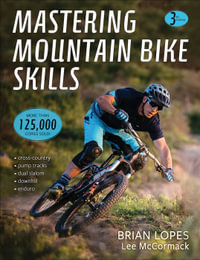
Mastering Mountain Bike Skills (3rd Edition)
Cross-Country, Pump Tracks, Dual Slalom, Downhill, Enduro
Paperback
RRP $48.99
$35.90
OFF
This product is categorised by
- Non-FictionSports & RecreationSports Training & CoachingSports Psychology
- Text BooksHigher Education & Vocational TextbooksHealth Care Higher Education Textbooks
- Text BooksTextbook FinderThe University of New EnglandPSYC308 Sport & Exercise Psychology
- Text BooksTextbook FinderCharles Darwin UniversitySPE206 Health, Exercise & Sport Psychology
- Text BooksTextbook FinderMurdoch UniversityEXS301 Advanced Sport & Exercise Psychology
- Text BooksTextbook FinderFlinders UniversityHLPE2300 Foundations of Sport Psychology
- Text BooksTextbook FinderMurdoch UniversityEXS201 Sport & Exercise Psychology
- BargainsAcademia & Knowledge Bargains
- BargainsNon-Fiction BargainsSport Book Bargains





